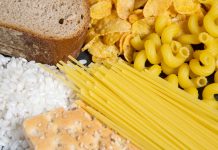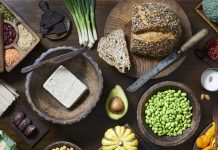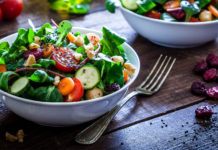The controversy surrounding organic foods is far from being resolved. Some argue it’s merely a marketing tool aimed at emptying consumers’ pockets, while others believe they’ve found the path to better health, provided they can afford the luxury.
Although only 1% of global agricultural land is cultivated according to organic farming principles, the demand for this range of products is on the rise—albeit with significant variations from country to country.
Among the countries where organic farming reaches high percentages are the Falkland Islands (36.3%), Liechtenstein (30.9%), Austria (19.4%), Sweden (16.4%), Estonia (16.2%), and Switzerland (12.7%).
In the U.S., organic food sales reached a record $43 billion in 2016, growing by 8.4% compared to the previous year (while the broader food category increased by only 0.6%), according to data from the Organic Trade Association. The European organic market was €33.5 billion in 2016, with sales of over €30 billion in EU member countries alone. Denmark leads the list of countries with the highest sales of organic food (9.4% of total sales), followed by Luxembourg (8.6%), Switzerland (8.4%), and Germany (7%).
The price on the label, face to face with the budget
Price is a prohibitive factor for many who would like to consume only organic food.
Entrepreneur Patty Lennon from Brookfield estimates that the $450 she spends weekly on organic food could be reduced to $275-300 if she used conventional products, but that’s a luxury she can afford.
Paediatrician Alan Greene set out to eat exclusively organic for three years (2005-2008) and found the experiment more challenging than he had imagined. Greene’s decision to go all-in on organic for such an extended period came after learning about a farmer who noticed that his animals got sick less frequently after entering the farm’s organic certification program. At the end of his experiment (which he was determined not to interrupt), Greene said he felt he had a higher level of energy and reported fewer illnesses than generally recorded from contact with sick patients.
The paediatrician suggests that the high cost of an organic diet can be reduced by completely or largely giving up meat. “Whenever you go up the food chain, the costs pile up,” he says. In his book Raising Baby Green, Greene advises parents to choose the organic option at least for staple foods—milk, potatoes, apples, and baby food.
However, for the consumer deciding to opt for organic products or increase their share in the menu, price is not the only dilemma to settle. There are heated controversies regarding the organic diet that one must navigate, and until forming one’s own conclusions, it’s necessary to become familiar with labels and the actual information they convey.
The confusion of terms, an efficient marketing tool
The terms bio, ecological, or organic are synonymous, referring to the same reality—products obtained without the use of chemicals, genetic interventions, or irradiation and certified by authorised organisations.
The term “organic” is used in the Anglo-Saxon world, “bio” is predominantly used in the French and German-speaking regions, while the U.S. and Canada prefer the term “ecological.”
The label “natural” or “traditional” often brings confusion. Consumers frequently mistake these products for organic ones, despite having no connection. The terms “natural” and “traditional” are not legally regulated, allowing any producer to attach these labels to the items they sell.
In contrast, an organic producer must undergo a conversion period of at least two years for a crop. Organically raised animals must have access to organic grazing lands and should not be administered antibiotics or growth hormones. Products labeled as “natural” or “traditional” do not, however, adhere to these rigorous standards.
The term “organic,” on the other hand, informs the customer that they are dealing with a product containing a minimum of 95% organic ingredients and the use of additives and synthetic substances has been restricted in its production.
Understanding the information on the label doesn’t automatically mean the end of the decision-making process. A consumer willing to pay at least 20% more (if not double or triple) for an organic product starts from the need to know that they are getting at least as much as they spend on it, in the currency of health. However, studies on the benefits of organic foods have found themselves in a war in recent years, without any signs of a peace treaty.

Are there differences between organic and conventional products?
A study from Stanford University, published in 2012, concluded that there is limited evidence of the superiority of organic foods.
“Some believe that organic food is always healthier and more nutritious. We were a little surprised that we didn’t find that,” says Crystal Smith-Spangler, the study’s coordinator.
Analysing 237 studies, researchers concluded that there are no significant differences between the two categories of foods. The study showed that organic fruits and vegetables did not contain more nutrients than their conventional counterparts and were not less susceptible to contamination with bacteria such as Escherichia Coli.
On the other hand, the study found that organic products are 30% less likely to contain pesticides than conventional fruits and vegetables, and organic pork and poultry have a 33% lower risk of contamination with antibiotic-resistant bacteria. Researchers argued that the level of pesticides in conventional foods did not exceed allowed limits and was not harmful to health.
Commenting on these results, Liza Oates, who studies the effects of organic diets on health, asserts that all the study proves is that the interest of the organic consumer focuses not so much on what organic foods have but on what they don’t have—pesticides and antibiotics.
A 2014 report, based on the analysis of 343 studies, arrived at different conclusions from the Stanford study, indicating clear differences between organic and conventional foods. An international group of researchers, led by Professor Carlo Leifert of Newcastle University, found that organically produced foods have lower levels of cadmium—a toxic metal that can contaminate conventional fertilisers—and 17-69% more antioxidants. This confirmed the hypothesis that plants produce higher quantities of antioxidants in the absence of pesticides. Although a high level of antioxidants has been associated with a lower risk of chronic diseases—including cardiovascular diseases, neurodegenerative diseases, and even certain forms of cancer—Leifert says that there haven’t been long-term studies yet to demonstrate that an organic diet has a significant impact on health.
One of the criticisms levelled at the study was that different levels of antioxidants could be due to variations in climate, soil type, or crop variety, although the authors argue that the large number of studies should average out these differences.
Another criticism relates to the fact that, although conventional products showed higher levels of cadmium and pesticides, these did not exceed permissible limits. However, researchers argue that the accumulation of cadmium in the body over time has negative effects, and the accepted limit for pesticides varies from individual to individual.
The research aligns with the expectations of eco-conscious consumers, says Helen Browning, director of the charity The Soil Association, expressing hope that this data will encourage the UK to support organic farming more, as other European countries do.
Tom Sanders, a nutrition professor at King’s College in London, remains sceptical about the real health difference that the surplus nutrients in organic foods could make. “What is most important is what you eat, not whether it’s organic or conventional,” says Sanders, emphasising the need to focus on healthy food groups, regardless of how they are produced.
A study conducted in 2015 on a group of 20 children from Oakland, California, and 20 children from the agricultural community of Salinas, California, showed that organic foods can reduce pesticide levels in a child’s body. Participants in the study were subjected to a conventional diet for the first four days and an organic diet for the next seven days, finally returning to conventional foods for another five days.
The study found that 72% of children’s urine samples contained traces of pesticides. While on the organic diet, two of the most frequently detected pesticides decreased by 50%, while the level of a widely used herbicide decreased by 25%, with three other pesticides only slightly lower in the organic diet.
“There’s evidence that diet is one route of exposure to pesticides, and you can reduce your exposure by choosing organic food,” says Asa Bradman, the study’s coordinator, adding that this doesn’t mean conventional fruits and vegetables are unsafe.
The media periodically picks up the results of various studies proclaiming the superiority of organic foods or, conversely, challenging it, and consumers decide based on the available information but also according to the motivations behind their organic choices. A survey by The Soil Association showed that the desire for a healthy diet, avoiding chemical residues, concern for the environment, and animal welfare are the main reasons consumers choose organic products.
However, for those already convinced of the benefits of an organic diet, there is still a dilemma—how can they be sure that the products they buy are genuinely organic?

Less rosy news about green foods
There is a distinction between products labelled as “organic” and those that mention the words “made with organic ingredients.” The former must contain at least 70% organic ingredients, while the latter must contain 95% organically produced ingredients.
Even organic foods can contain synthetic substances, and this is a basic condition “to safely produce and process an organic product,” at least until an organic alternative is found, says Gwendolyn Wyard, Vice President of the Organic Trade Association in the USA.
The good news about organic foods is that they undergo a regulatory and monitoring process absent in conventional food production, as emphasised by the One Green Planet association. The less good news is that within the 5% non-organic ingredients, apart from water and salt, a whole list of non-organic, synthetic substances is included (such as ascorbic acid or xanthan gum).
According to a report on the labelling of organic products, permitted ingredients in organic products—such as cornstarch, brewer’s yeast, calcium citrate, etc.—may contain monosodium glutamate, which is not beneficial to health. Carrageenan (E407), an additive present in organic products, can cause severe reactions in the body and may even be carcinogenic. Another additive, maltodextrin, could be derived from genetically modified corn. Guar gum, used in gluten-free products, can cause esophageal and intestinal problems and may contain a high level of dioxins—a category of highly toxic chemicals with potential carcinogenic properties.
The list of accepted ingredients in organic food production is long, as is the list of potential negative health effects. Most ingredients have been allowed either because there are no organic substitutes or due to cost considerations, says investigative reporter Vani Hari, following petitions submitted by producers to the US Department of Agriculture.
There is also a potential corporate influence on the National Organic Program, with industry giants that have developed organic product lines influencing the regulatory policies of the food system.
Beyond the gaps in the legal regulation of organic procedures, there are often deficiencies in the control system that intersect with the bad faith of some producers.
A 2013 study by researchers at Babeș-Bolyai University showed that randomly selected organic fruits from the city market were indistinguishable from conventional ones—thiabendazole, a synthetic fungicide, exceeded the maximum values allowed by current regulations by more than 13 times.
A report from the US Department of Agriculture in October 2017 revealed that the ecological standards of imported foods, which could have been subjected to pesticide fumigation, have not been successfully verified. The US relies on corn and soybeans for organic animal feed but is forced to import them since its crops are mostly genetically modified.
The challenges of organic certification in a global economy were highlighted in an investigation by The Washington Post. Deviations from the strict regulations of organic farming cannot be solely attributed to foreign producers. Another investigation by the same newspaper last year showed that in the largest farm of the American company Aurora Organic Dairy, only a few hundred cows out of the 15,000 in the herd were allowed to graze. Contacted by reporters, inspectors monitoring the company could not provide data as inspections were consistently carried out after the grazing season. Ultimately, milk samples showed that the milk sold under the “organic” label differed very little from regular milk.
In the quest for the ideal food solution, One Green Planet emphasises that in a perfect world, we would have access to clean, non-genetically modified foods at reasonable prices. However, we are forced to live in less-than-ideal conditions, and our choices should be the best possible given our circumstances.
While the organic industry has its skeletons in the closet, the conventional food industry raises alarming health concerns for consumers.
In 2017, researchers found phthalates, toxic substances used in the production of plastics, in children’s favourite foods, as well as herbicides in ice cream. In fact, nearly all our foods are contaminated with chemicals, concludes an article discussing these studies, pointing out that there are at least 1,000 such substances we regularly ingest, though they have never been tested for safety. This is in addition to thousands more that have been insufficiently tested and deemed relatively safe at low doses.
Some safety measures consumers can adopt are straightforward, says nutritionist Carrie Dennett: increasing the consumption of fruits and vegetables, whether organic or not, sourcing from local farms and trusted individuals, promptly consuming foods to prevent nutrient loss, and opting for seasonal foods that require fewer pesticides.
Purchasing minimally processed foods is a crucial step in preserving our health, according to One Green Planet, and closely scrutinising labels should become a habit. Whenever we come across a synthetic, non-organic, or toxic ingredient on the label of a supposedly organic product, it would be wise to leave it on the shelf and write to the company and the bodies regulating organic production, expressing our desire for 100% safe foods.
What we should be aware of is that sometimes the government’s disinterest in regulating the food system and companies’ indifference to customer health align with our own misguided decisions. What does it say about our society that it has allowed the development of a system where every American child is born with over 100 environmental chemicals in their body, most of them untested, wonders Thomas Zoeller, a researcher at the University of Massachusetts.
It’s an answer that each of us could partially articulate, acknowledging honestly how many times we’ve indulged in the unhealthy offerings of the market simply because we couldn’t resist temptations, and reflecting on how much of our budget and time we’d be willing to allocate to transition to a dietary pattern safer than the one we currently embrace.
Carmen Lăiu is an editor of Signs of the Times Romania and ST Network.



















